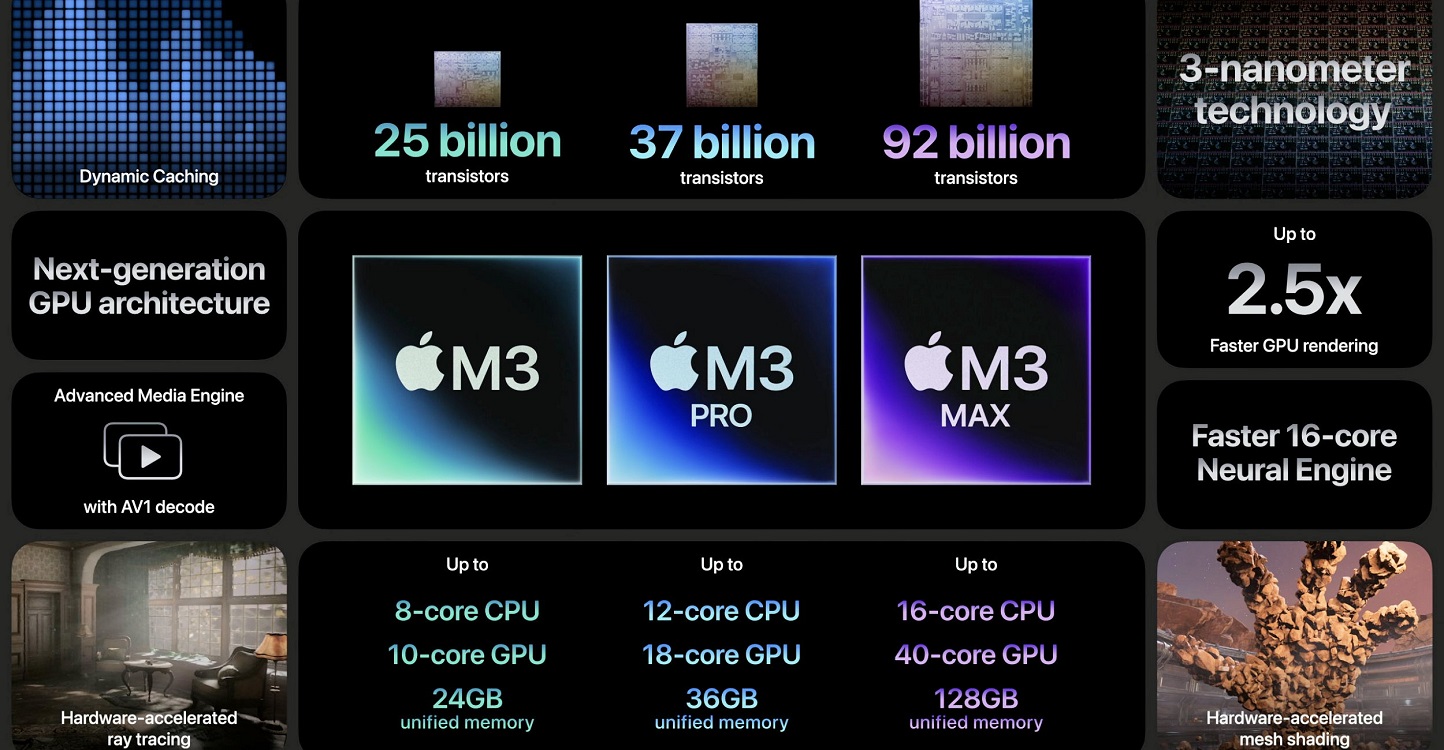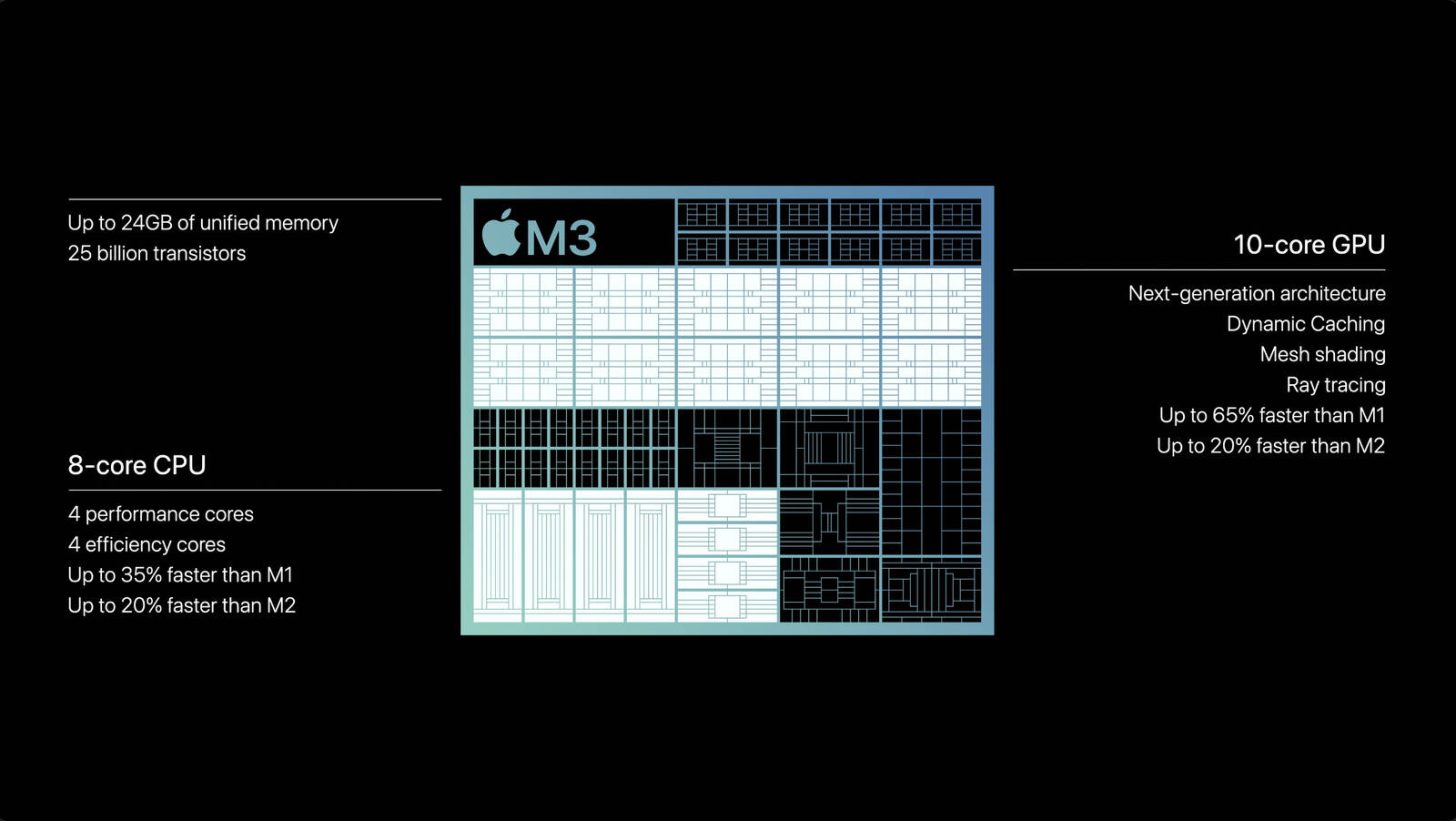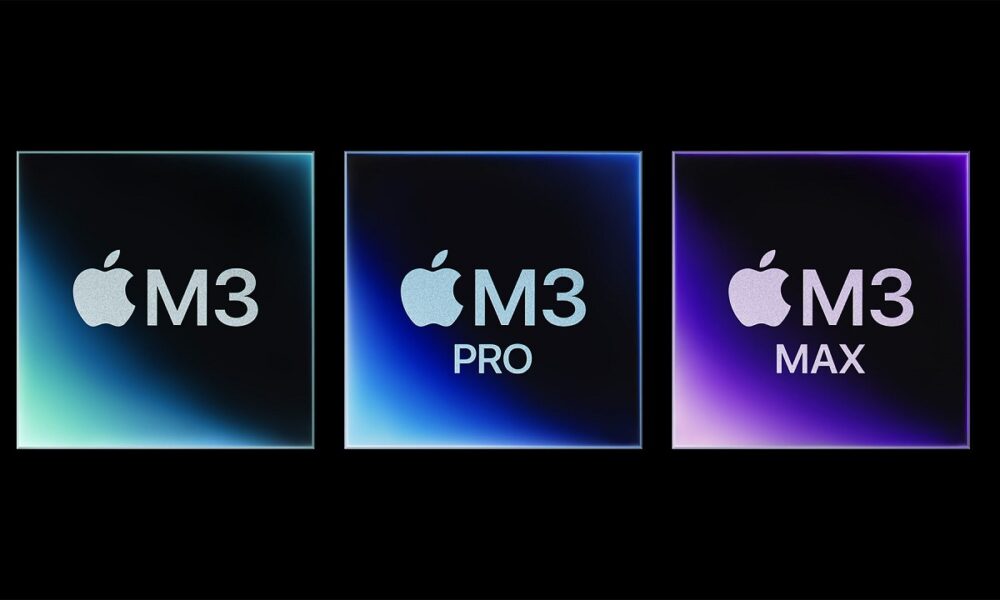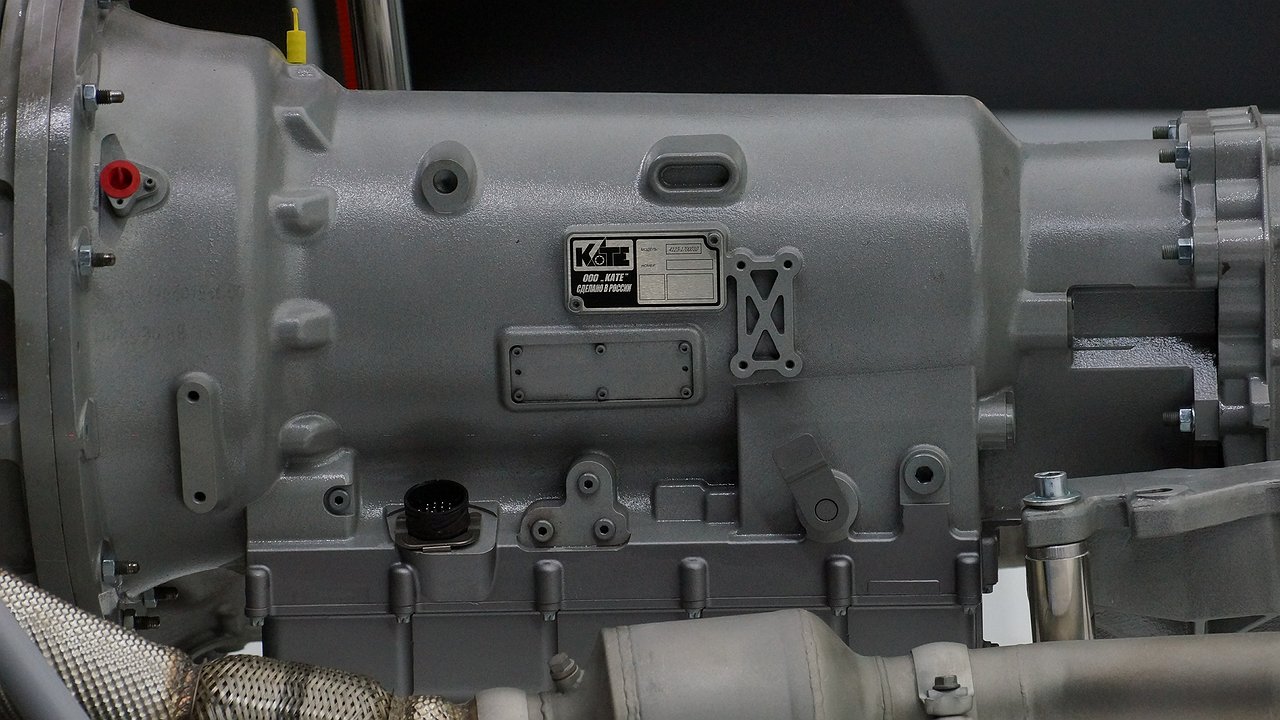The giant presented the bitten apple Apple M3, M3 Pro and M3 Max, three new high-performance SoCs with which those from Cupertino have performed a rather remarkable generational renewal. All three use a monolithic core design, and as you might imagine, the Max model is the most powerful of this new line of “systems on a chip.” All three are used in the new MacBook Pro and the new iMac line.
As usual, Apple highlighted not only the configurations of these new SoCs, but also the jump to TSMC 3nm node, which represents a significant improvement in terms of efficiency and density of transistors and supported technologies. In this sense, we have two great keys, ray tracing acceleration and hardware support network shaders.

Hardware-accelerated ray tracing needs no introduction, this technology makes it possible realistically recreate the behavior of light in a 3D scene, although Apple hasn’t specified the technical details of the hardware it uses in its new SoCs to accelerate the technology. Mesh shaders are also an old acquaintance in this sector because were incorporated into DirectX 12 Ultimate in 2018 and are present in Unreal Engine 5.
Apple M3 specifications

- 8-core CPU (4 high-performance cores and 4 high-efficiency cores).
- Apple GPU with 10 graphics cores.
- Up to 24GB of unified memory (used as VRAM and RAM).
- 25 billion transistors.
- Made on a 3nm node.
- Hardware linked shader and ray tracing acceleration.
- 16-core neural processing unit.
- Dynamic cache.
- AV1 codec support.
CPU is 35% faster than M1 SoC and outperforms the Apple M2 by 20%. Your GPU is maxed out 65% faster than M1 and 25% more powerful than M2which means that on a graphical level it represents a big improvement over the first generation model and a slight jump over the second generation.
Apple M3 Pro Specifications

- 12-core CPU (6 high-performance cores and 6 high-efficiency cores).
- Apple GPU with 18 graphics cores.
- Up to 36GB of unified memory (used as VRAM and RAM).
- 37 billion transistors.
- Made on a 3nm node.
- Hardware linked shader and ray tracing acceleration.
- 16-core neural processing unit.
- Dynamic cache.
- AV1 codec support.
This model outperforms the M1 Pro SoC by up to 20%, while its GPU is up to 40% faster than the M1 Pro and up to 10% more powerful than the M2 Pro SoC. In this case we have minor performance improvement If we compare directly with the previous generation, as we can see.
Specifications Apple M3 Max

- 16-core CPU (12 high-performance cores and 4 high-performance cores).
- Apple GPU with 40 graphics cores.
- Up to 128 GB of unified memory (used as VRAM and RAM).
- 92 billion transistors.
- Made on a 3nm node.
- Hardware linked shader and ray tracing acceleration.
- 16-core neural processing unit.
- Dynamic cache.
- AV1 codec support.
A high-end SoC goes beyond up to 80% CPU performance M1 Max and up to 50% CPU performance of M2 Max, while in GPU performance it is up to 50% more powerful than M1 Max and 20% faster than M2 Max. In this case, the differences are greater and much easier to appreciate.
All three have a new generation neural processing unit specializing in AI (artificial intelligence) and offer excellent value in terms of power per watt, so much so that according to Apple they are able to achieve autonomy of up to 22 hours of use for each battery charge. Please note that this value represents the maximum in the best possible scenario.

















